Bulgaria / Република България – Let’s explore here
What’s it like in Bulgaria?
Bulgaria is an incredibly beautiful country full of mountains rising from the plains, and sits within the Eastern Balkans. The country is also home to some of Europe’s most beautiful landscapes, including the Rila and Pirin mountains, as well as pristine beaches along the Black Sea. The highest point is Mount Musala, in Rila national park, at 9,600 ft (2,925 m) above sea level.
It’s about half the size of the United Kingdom, and has a population of about 6½ million people, 1½ million of whom live in the capital Sofia / София. Sofia is one of Europe’s oldest cities, having been inhabited since at least 7000 BC. It shares its land borders with Greece, North Macedonia, Romania, Serbia and Turkey.

A bit about the history of Bulgaria
Bulgaria has a rich and diverse history, shaped by its location at the crossroads of Europe and Asia and its role as one of the earliest medieval states in Europe.
Early History and the First Bulgarian Empire
The area of modern-day Bulgaria has been inhabited since prehistoric times and was part of the ancient Thracian civilization. The Thracians were known for their warrior culture, being highly skilled in combat, and often fought as mercenaries in the armies of other civilisations, including the Greeks and Persians. The Thracian kingdom reached its peak under the reign of King Seuthes III in the 4th century BC, and by the 1st century BC, had become absorbed into the Roman Empire.
In the 7th century, the Bulgars, a Turkic people, arrived in the region and formed the First Bulgarian Empire in 681 under Khan Asparuh. The empire became a powerful state, particularly during the reigns of Tsar Simeon I (r. 893-927), who expanded the empire to its peak and fostered a golden age of culture and literacy.
Byzantine and Ottoman Rule
By the late 11th century, the Byzantine Empire began to reclaim Bulgarian territory. The Second Bulgarian Empire was established in 1185 but fell to the Ottoman Empire in 1396 after several centuries of internal and external conflict. Bulgaria remained under Ottoman rule for nearly five centuries, during which time the population largely converted to Islam, although many Bulgarians maintained their Orthodox Christian identity.
National Revival and Independence
In the 19th century, Bulgaria underwent a cultural and political revival, known as the National Revival, which sought to preserve its language, identity and heritage under Ottoman rule. This movement led to a series of uprisings and the eventual Russo–Turkish War (1877-1878). Following the war, Bulgaria gained independence in 1908, though it lost some territories after conflicts with neighbouring countries in the Balkan Wars.
World Wars and Communist Era
Bulgaria aligned with the Central Powers during World War I but was defeated, leading to territorial losses. In World War II, Bulgaria initially aligned with Nazi Germany but switched sides in 1944 as the Soviets advanced. After the war, Bulgaria became a Soviet satellite state, and the Communist Party took control in 1946. The country became a People’s Republic under Communist rule, marked by political repression and economic centralization.
Post-Communist Period
In 1989, Communist rule collapsed amid the broader fall of communism in eastern Europe. Bulgaria transitioned to democracy and a market economy in the early 1990s, though the period was marked by economic instability and political challenges. Bulgaria joined NATO in 2004 and the European Union in 2007, further integrating with the West. Today, Bulgaria is a parliamentary republic, known for its cultural heritage, particularly in the fields of literature, music, and art, and its beautiful natural landscapes.

Bulgaria road trip
Our Bugarian road trip was part of a much larger European road trip. From the outset of our Bulgaria road trip, it was a big shock to us just how beautiful the country is! Much in the same way as Romania was – just incredible!
South west Bulgaria
On our Bulgaria road trip, we travelled from the south of North Macedonia, through to the amazing Pirin and Rila mountains of Bulgaria, where we ended up in the Bansko ski resort area. It surprised us just how beautiful the whole area is, and it also shocked us just how many gambling adverts lined the road sides! We stayed over in the super clean Zora hotel in Blagoevgrad, highly recommended.
The Rila mountains are forested and hide lovely little lakes. Rila monastery is a must visit, just incredible! Similarly The Stob pyramids, which we chanced upon as we were driving north. Absolutely fantastic, though getting across to the far viewing area can be pretty precarious!
North west Bulgaria
In the north west of Bulgaria lie the absolutely jaw-dropping Belogradchik fortress & rocks. These rock formations can be seen from miles away, although from inside the amazing fortress the best are on display. A simply incredible sight that’s one of the best in Bulgaria!
Montana
We moved on to Montana in Bulgaria, not in the USA! Another great town, even in the pouring rain! It has a kind of post-Soviet era vibe about the place. We stayed in the fabulous Hotel Jitomir, which again is highly recommended, especially if you can get a room overlooking Jeravitsa Square.
Thrace
We then travelled through the Central Balkan national park, traversing the mountains in dense fog and on icy roads! There are a number of spectacular Thracian tombs in the area, that we ended up spending hours pouring over, as they were so interesting … we had no idea!
The Bulgarian coast
Finally we headed over to the Black Sea coast at Nessebar and old Nessebar. In winter time, coastal towns offer some amazing bargains, and everyone wants to provide you with upgrades 🙂 From there we headed south to the border with amazing Turkey!
The capital
On our return journey from the Caucasus, we ended up driving through Rila again, on our way to the amazing capital Sofia, where we stayed for a while. Sofia is an excellent city with a great mixture of the old world juxtaposed with the modern. A very safe feeling city, with loads to see and do. Highly recommended.
Map of our first road trip through Bulgaria
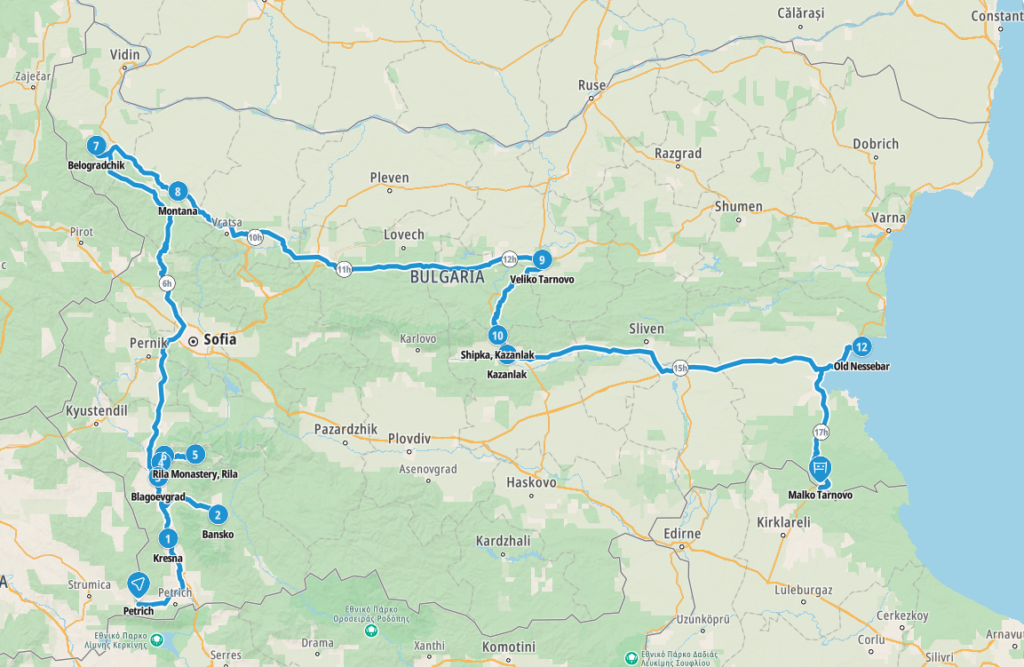
This is a map of our road trip from North Macedonia through Bulgaria and on to Turkey.
Our route took us via Kresna – Bansko – Pirin national park – Blagoevgrad – Stob pyramids – Rila Monastery – Rila national park – Belogradchik fortress & rocks – Montana – Veliko Tarnovo – Central Balkan national park – Shipka – Kazanlak – Nessebar – Malko Tarnovo
Map of our second road trip through Bulgaria
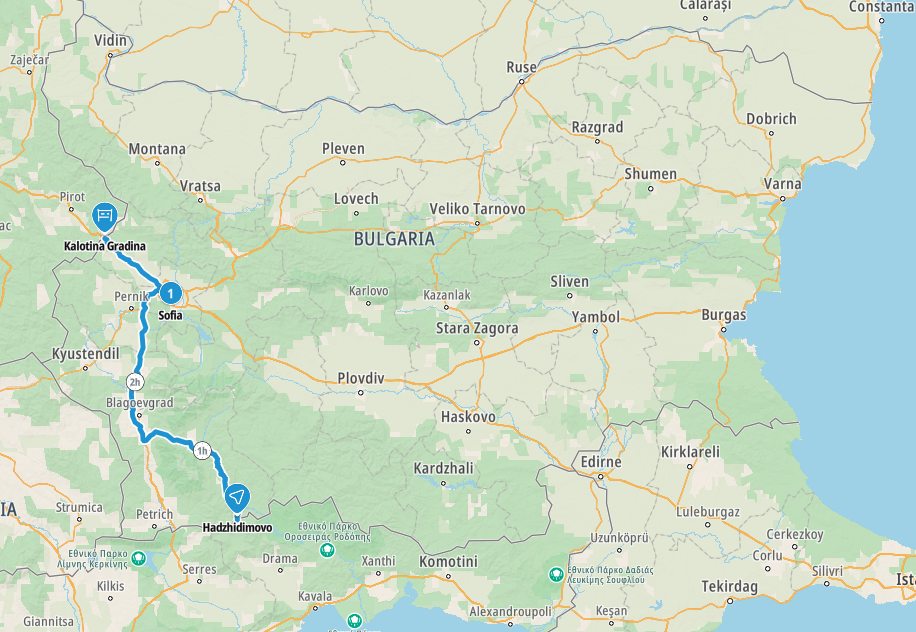
Our favourite places in Bulgaria
These are some of the best places that we explored on our road trip through Bulgaria. We’ve put them in alphabetical order.
Belogradchik fortress & rocks
Belogradchik fortress and rocks are located in the north west of Bulgaria, next to the town of Belogradchik.
The formation of the stunning Belogradchik Rocks has been taking place over the the last 250 million years. There remains some debate as to how they have realised their exact shaping, due to the time periods covered. They are a remarkable natural wonder which rise up to 655 ft (200 m). The rocks have earned their place in Bulgarian folklore, with many of the formations named after various figures, such as the Lion, The Schoolboy, and The Maiden. The Belogradchik Rocks are part of a larger geological reserve and offer spectacular views, making them a popular destination for hiking and sightseeing.
The Belogradchik Fortress was initially created during the Roman empire, and was extended during the 14th century. The walls are 6½ft (2m) thick and 30ft (12m) in height. The Fortress is a popular tourist destination, and is a UNESCO tentative World Heritage site.

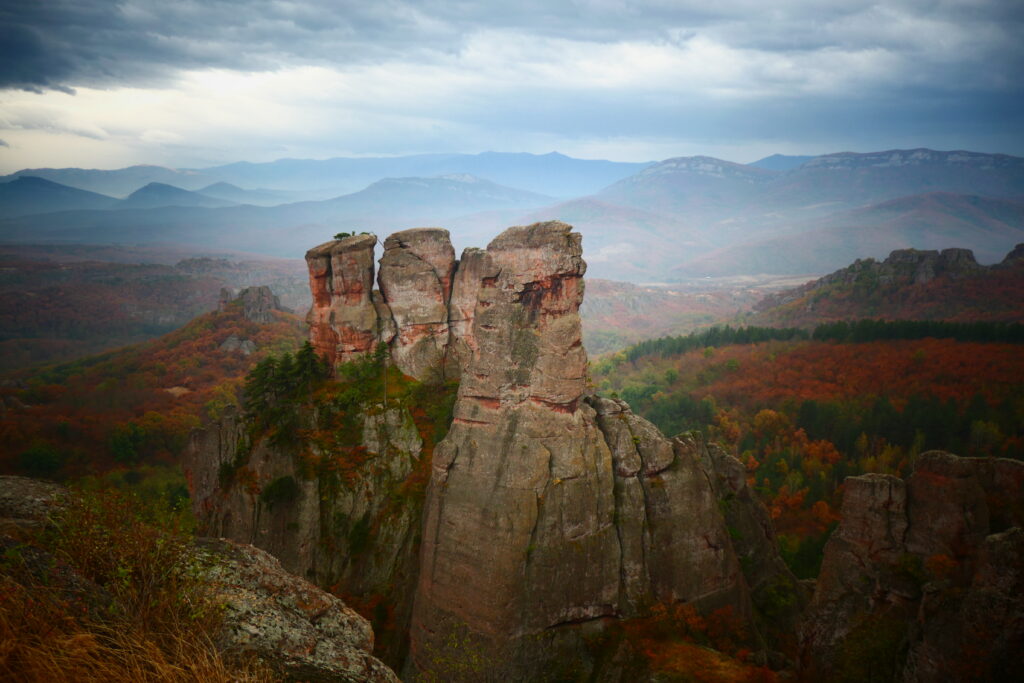
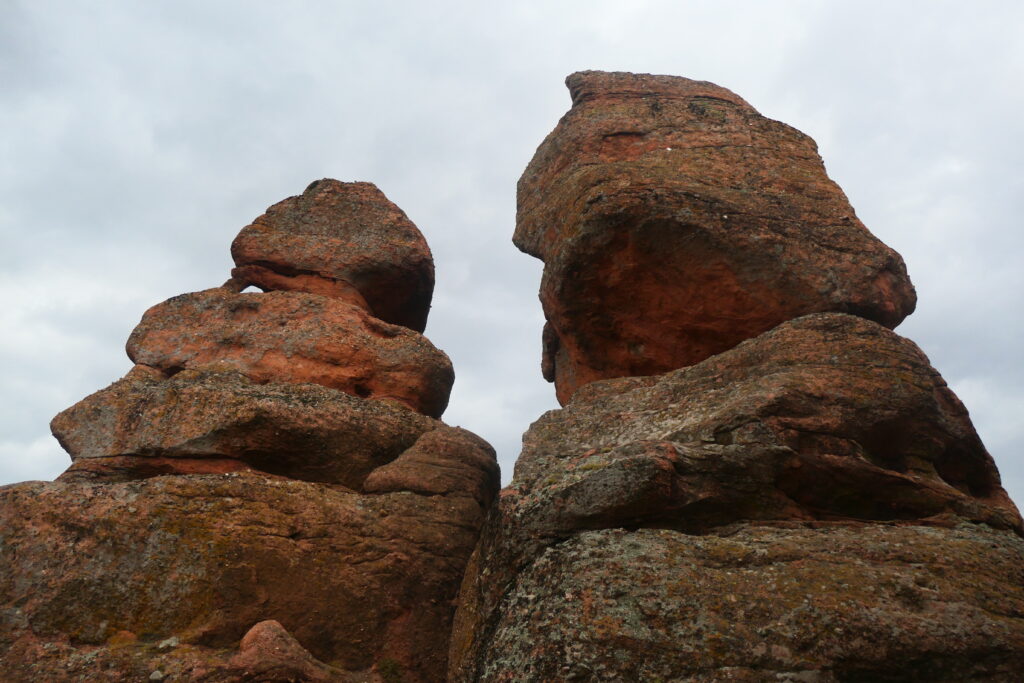
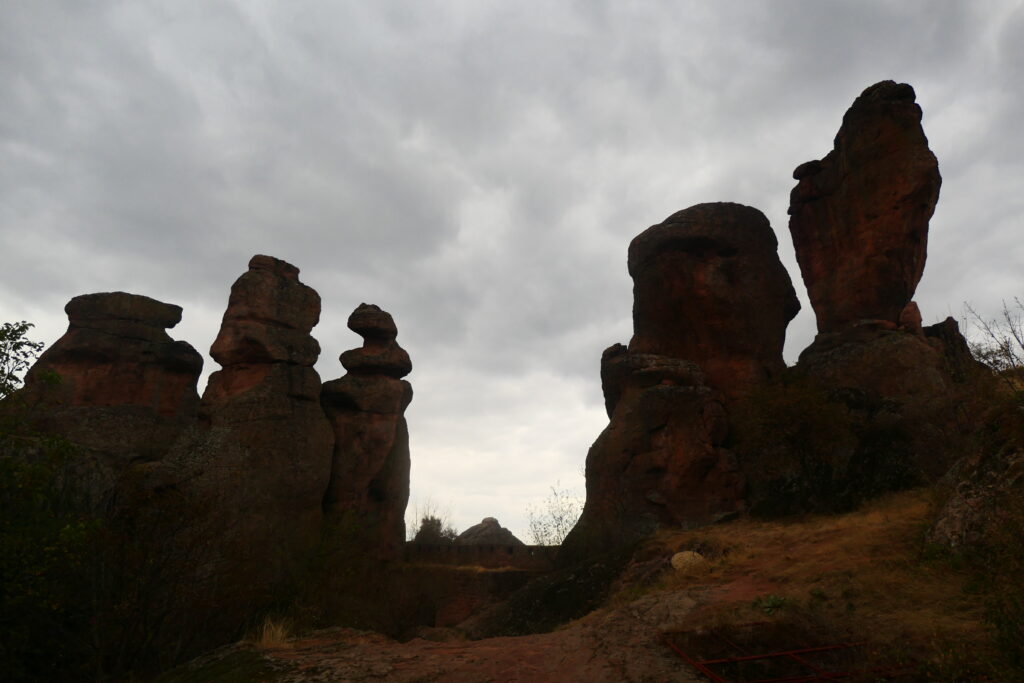

Kazanlak
Kazanlak is an ancient town in in the picturesque Rose Valley in central Bulgaria, having been occupied since the 6th century BC. In addition to being the center for rose oil extraction in Bulgaria, it’s also the home of the Thracian city of Seuthopolis and the magnificent Thracian Tomb of Kazanlak, a UNESCO World Heritage site, known for its well-preserved murals.
The Thracian Tomb of Kazanlak is an ancient burial site, dating back to the 4th century BC. The tomb is famous for its well preserved frescoes that depict scenes of Thracian life, such as religious rituals and the funeral procession of a noble or royal figure. The tomb is constructed with large stone blocks and features a corbel-vaulted chamber. The tomb’s intricate murals and its historical significance make it one of Bulgaria’s most important archaeological sites.


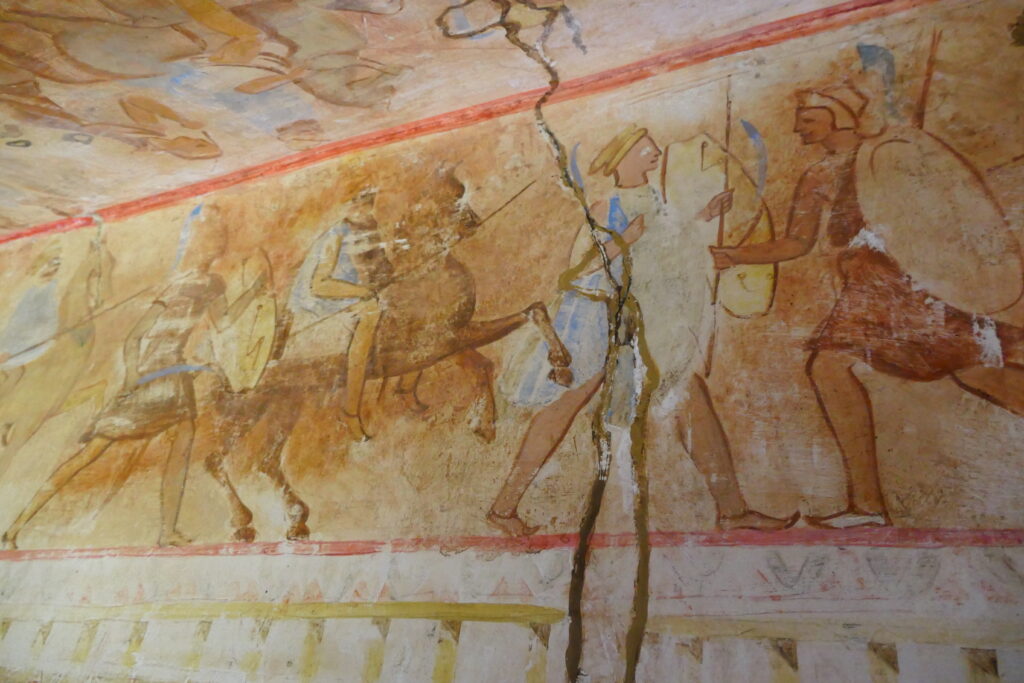
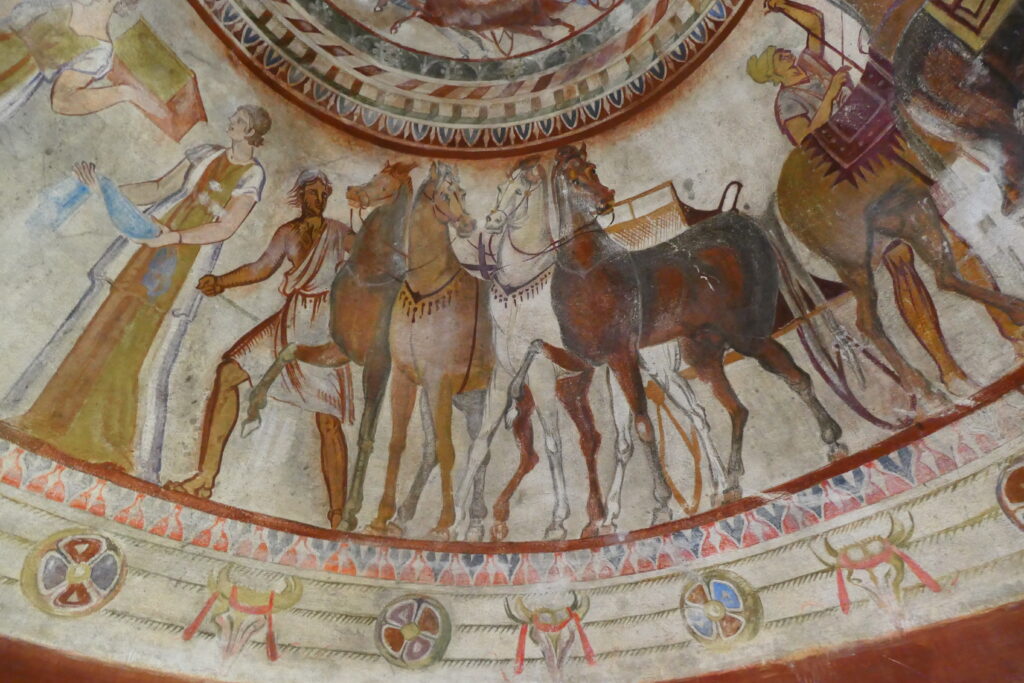
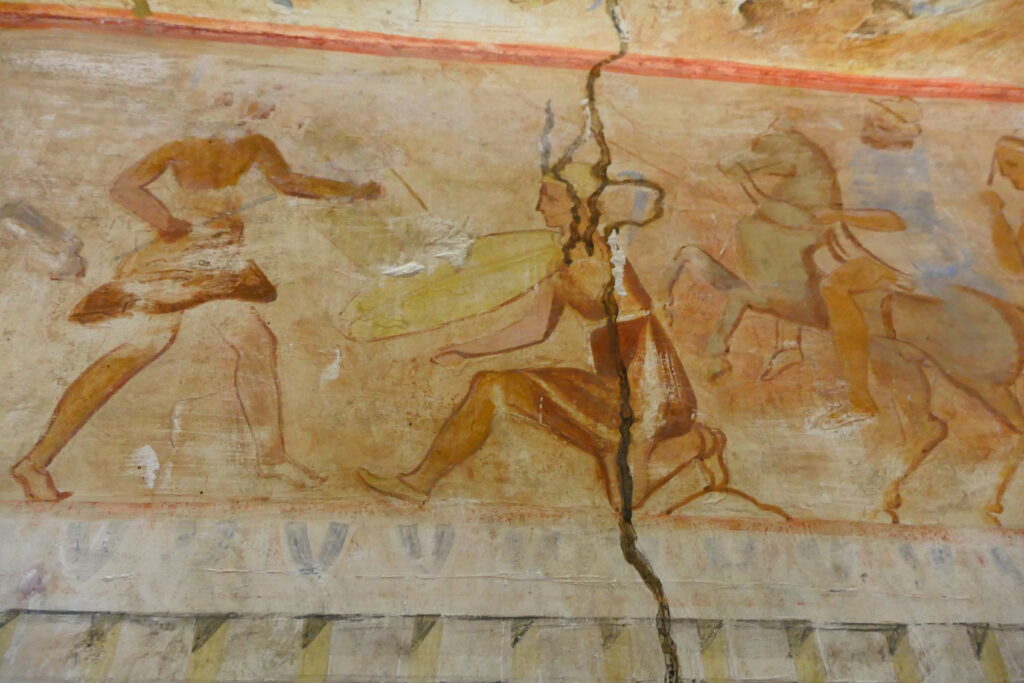
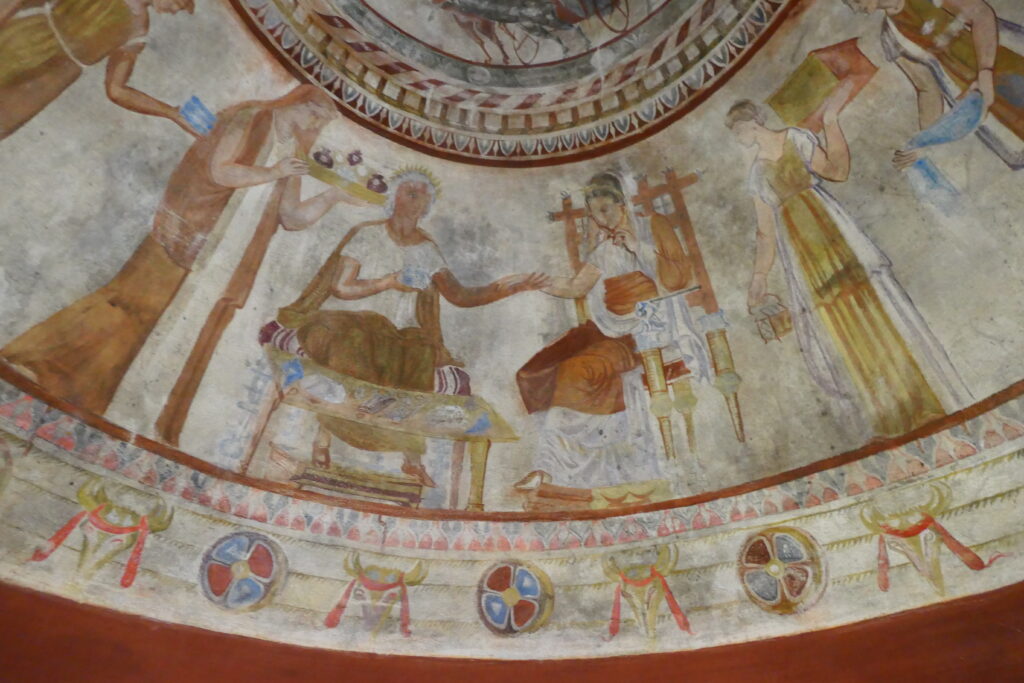
Montana
Montana is a lovely, intriguing town in the north west of Bulgaria, situated near the Danube River. Its population is around 37,000 (2021) people. Known for its rich history, Montana is one of Bulgaria’s oldest settlements, with traces of ancient Thracian, Roman, and Ottoman civilizations. We stayed in the very nice Hotel Jitomir, which overlooks the Monument of the September Rebellion and the Fountains on Jeravitsa Square. The hotel also has a great restaurant!
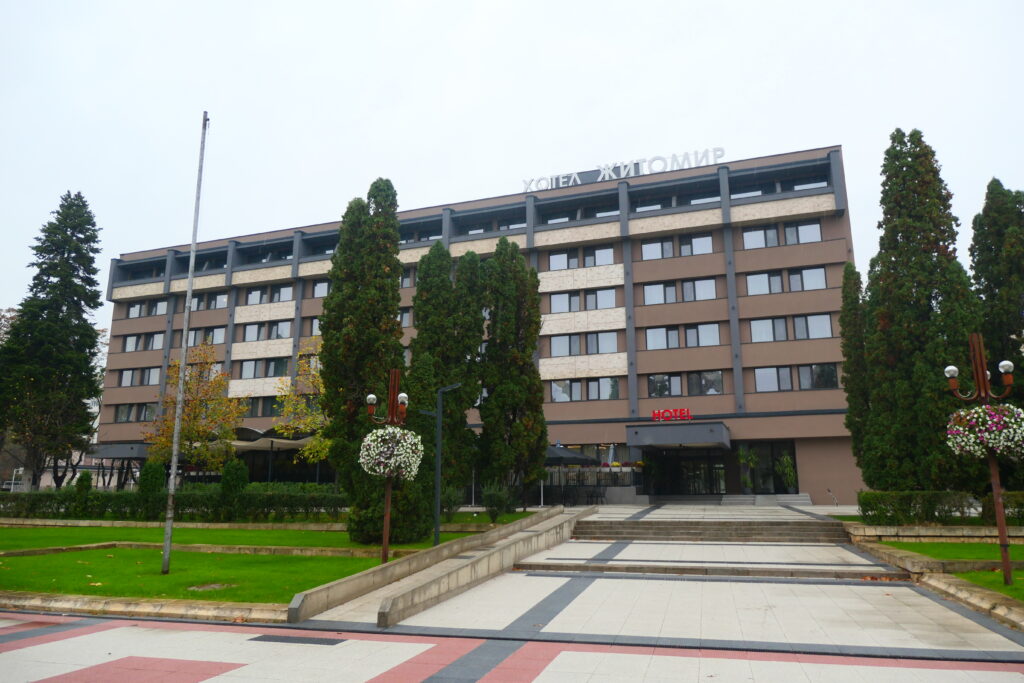
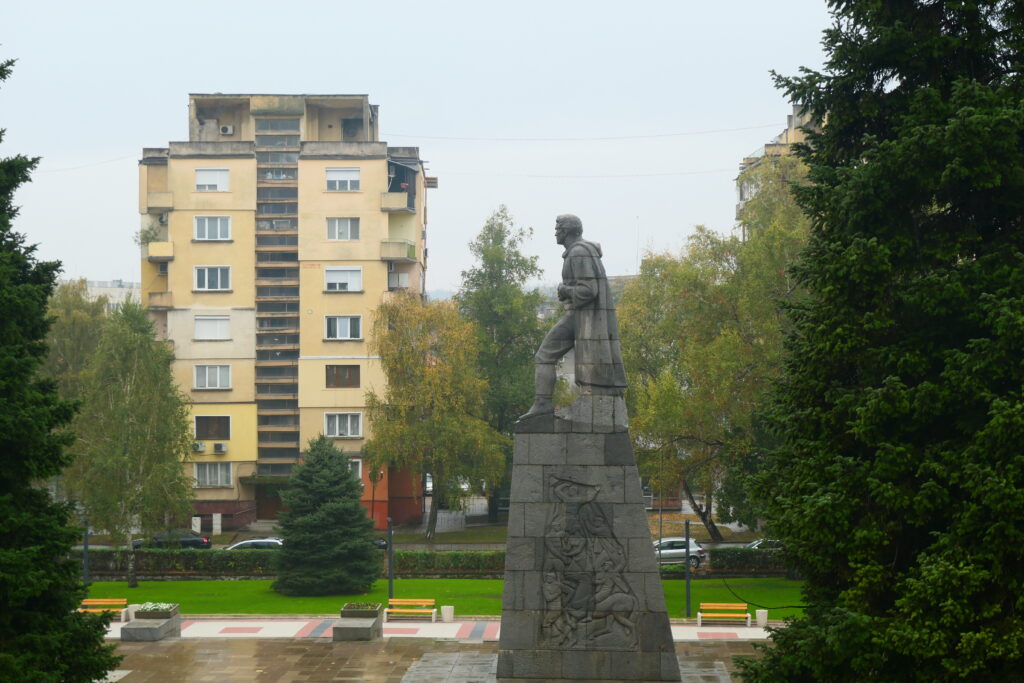


Nessebar
Nessebar is split between the old city and the new city. The old city is a small ancient city and UNESCO World Heritage site, located on a small peninsula along the Black sea coast. Known for its rich history, old Nessebat is one of the oldest towns in Europe, having been occupied since the 6th century BC, dating back to ancient Thracian times.
The town’s architecture reflects centuries of influence from Greeks, Romans, Byzantines, and Ottomans. Its cobbled streets, well-preserved churches, and charming wooden houses make it a popular destination for history lovers. Notable sites include the Basilica of St. Sofia, the Church of Christ Pantocrator, and the Ancient City Walls. Old Nessebar’s scenic views, historical landmarks, and vibrant culture attract countless visitors each year.
The new city was built in 1925, and houses most of the hotels for this pretty seaside tourist resort.



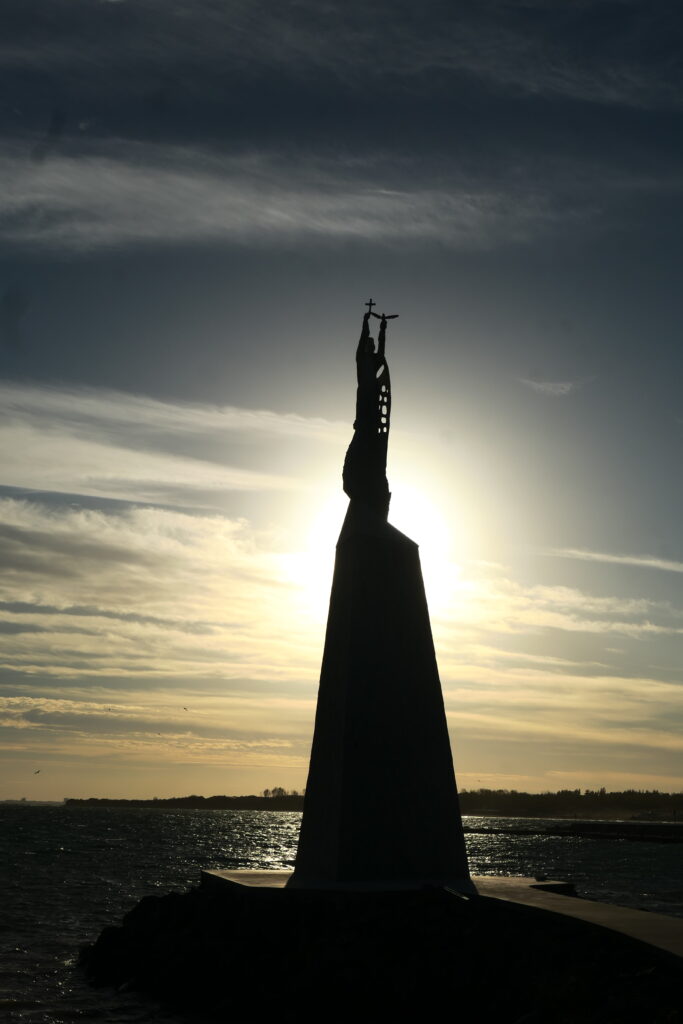

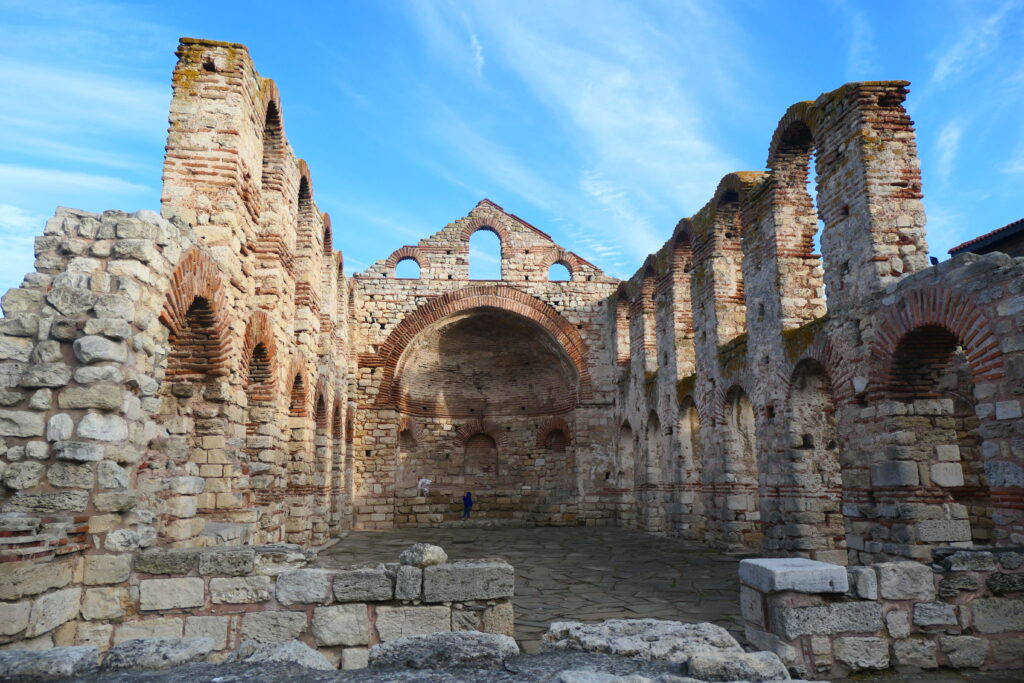
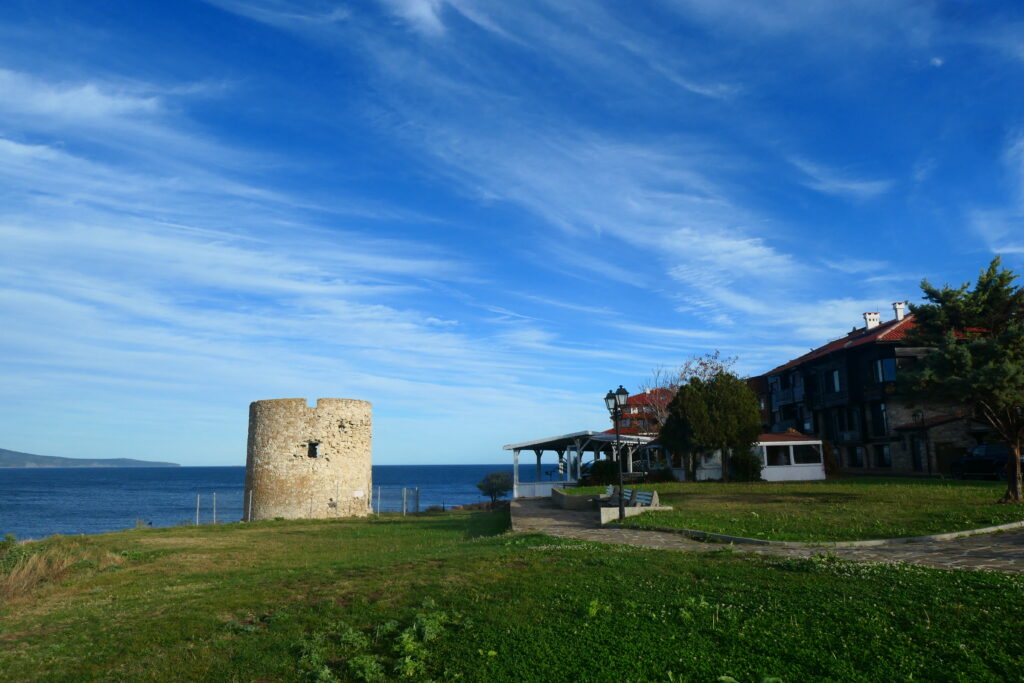

Rila Monastery
Rila Monastery is a working, 10th century monastery located in the Rila mountains in the west of Bulgaria – 60 monks live there. It is officially known as the Monastery of Saint John of Rila, and is the largest and most famous Eastern Orthodox monastery in Bulgaria. Its is one of Bulgaria’s most important tourist attractions, and is a UNESCO World Heritage site.
The monastery is known for its stunning architecture, including its ornate frescoes, intricate wooden carvings, and the iconic Hrelyo Tower. It serves as a spiritual center and a symbol of Bulgarian heritage, offering insight into medieval life and Orthodox Christianity. Surrounded by lush forest and dramatic mountain scenery, Rila Monastery attracts visitors for both its historical significance and natural beauty.
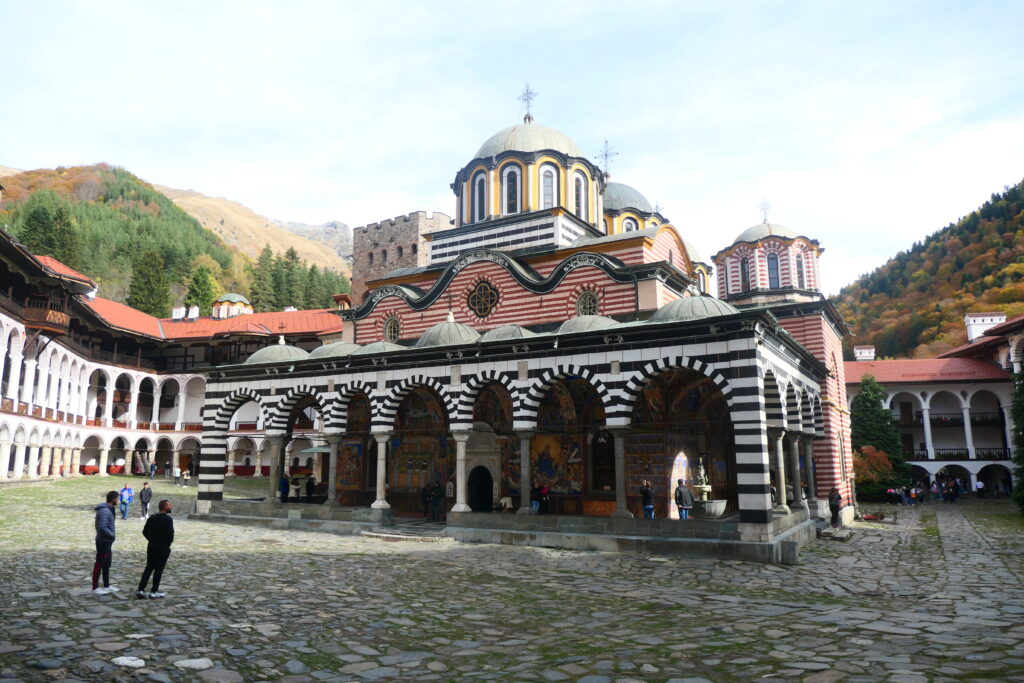


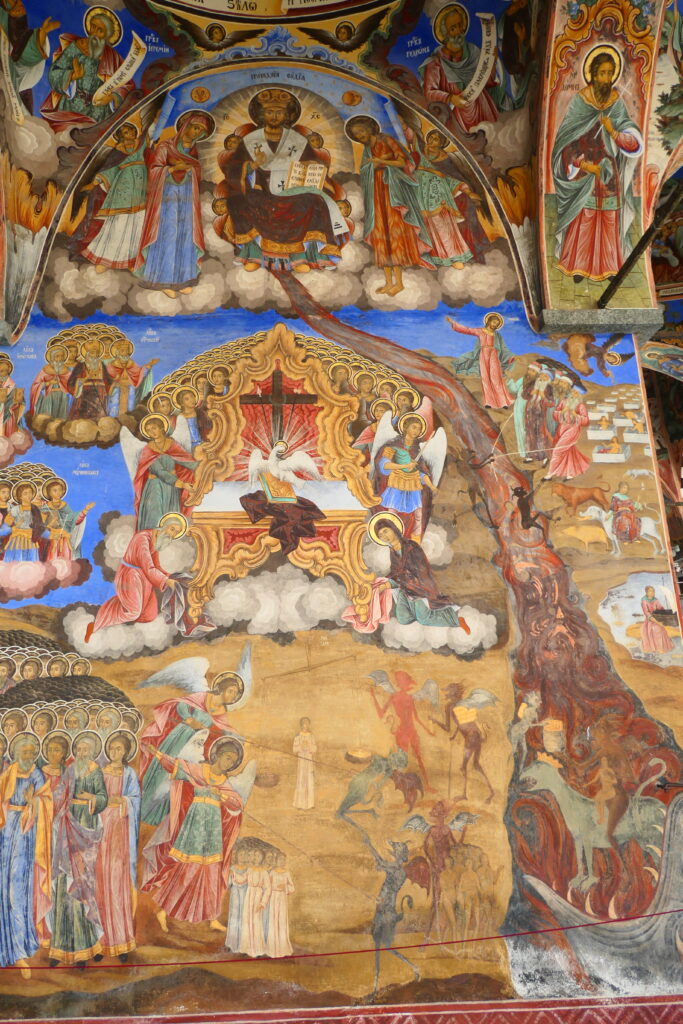
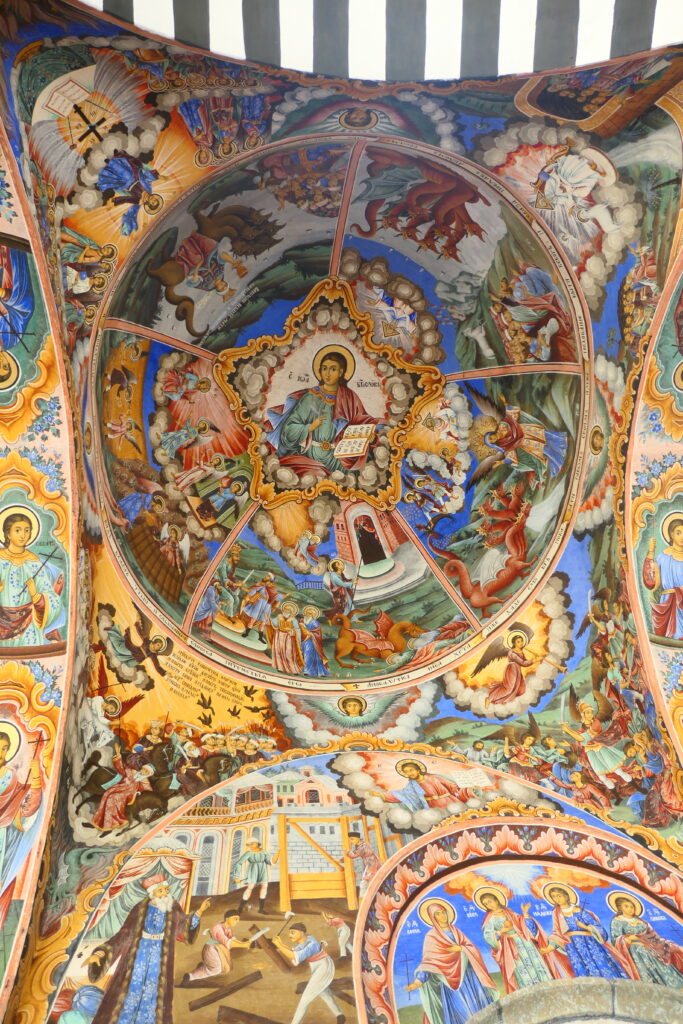

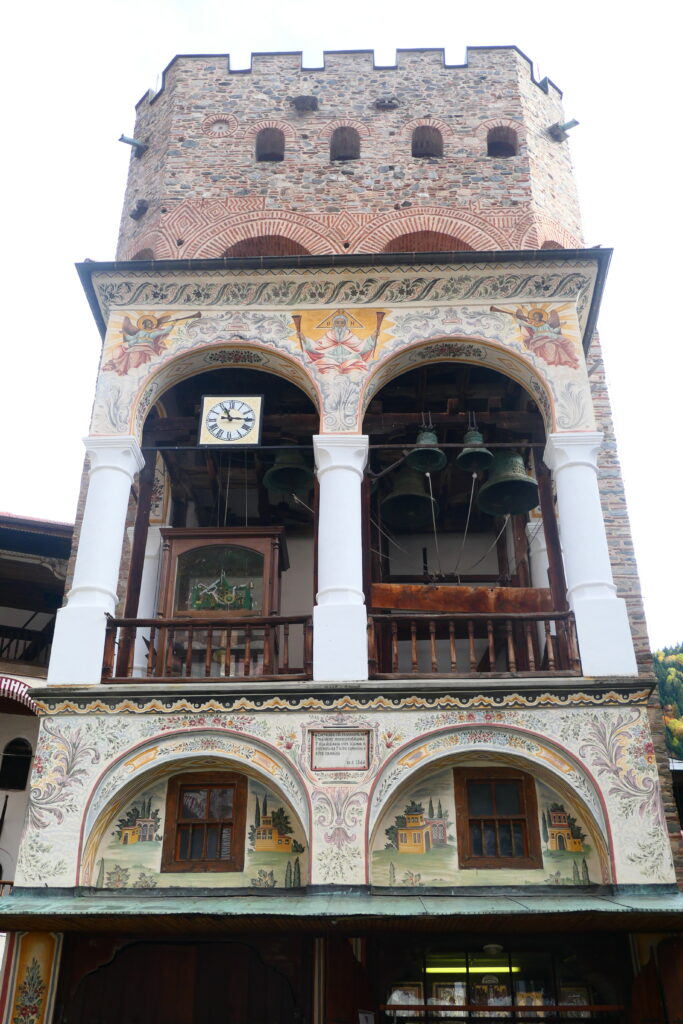
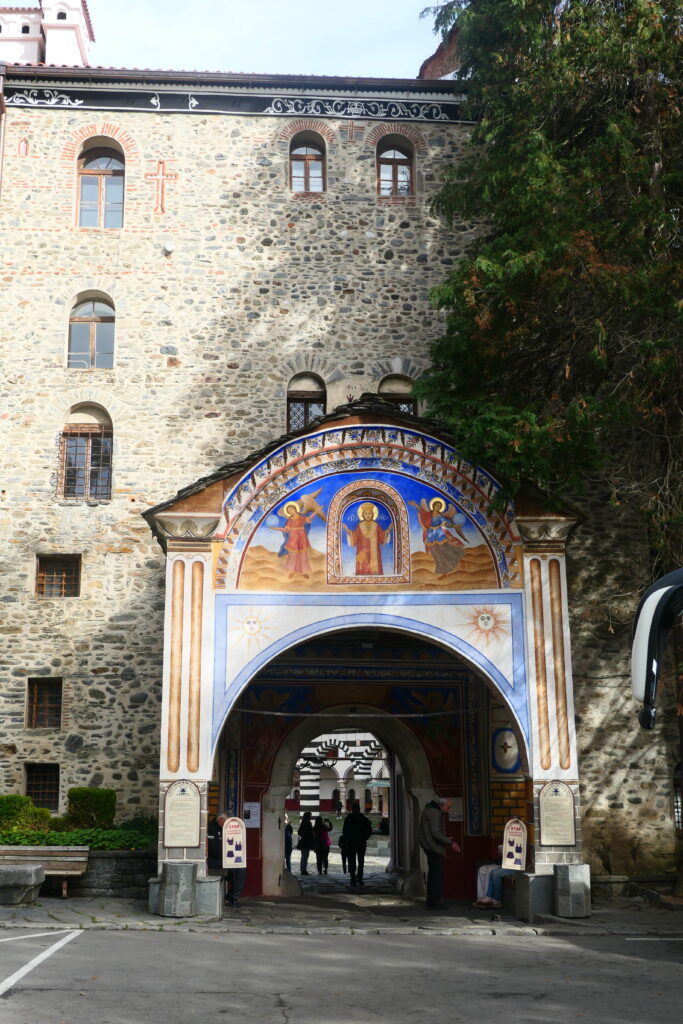
Shipka
Shipka is a village at the start of the Shipka pass in the Central Balkan national park. The Shipka Pass was a significant location during the Russo-Turkish War of 1877–1878, where Bulgarian and Russian forces fought to liberate Bulgaria from Ottoman rule. The Shipka Memorial Church, with its striking onion domes, stands in honor of those who died during the battle and the Shipka Monument, a towering obelisk, commemorates the bravery of the soldiers.
There are numerous very interesting Thracian tombs and artefacts in the area, such as the Tomb of Seuthes III. Built in the 5th century BC, the tomb is believed to be the final resting place of Seuthes III, a Thracian ruler. The tomb was discovered in 2004, and its unique, well-preserved chamber offers insight into the burial practices and artistic achievements of the Thracians. It features intricate stone carvings and reliefs, reflecting the importance of Seuthes III. The tomb is part of the UNESCO-listed Thracian Tombs of Kazanlak complex.




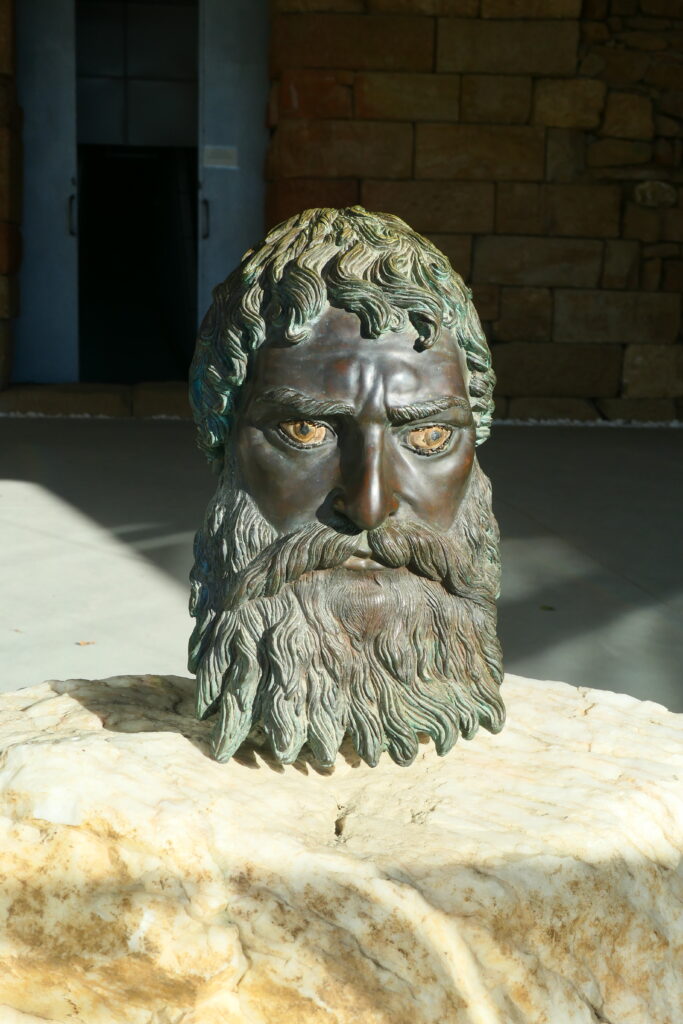
from c. 331 to c. 300 BC

Sofia
Sofia is one of the oldest continuously inhabited cities in the world, having been occupied since 7000 BC. As the capital of Bulgaria, its population is around 1.7million people (2021). The famous Statue of Sveta Sofia, at 26½ft (8m) in height, stands in a spot once occupied by a statue of Lenin.
Located at the foot of Vitosha Mountain, it is a blend of ancient, medieval, and modern influences. Sofia is home to iconic landmarks like the Alexander Nevsky Cathedral, a symbol of Bulgarian Orthodox Christianity, and the Boyana Church, a UNESCO World Heritage site. The city also offers Roman ruins, Ottoman-era mosques, and Soviet-era architecture. With a thriving cultural scene, Sofia boasts museums, theaters, and galleries. The city’s mix of history, nature, and modern amenities makes it a very popular destination.

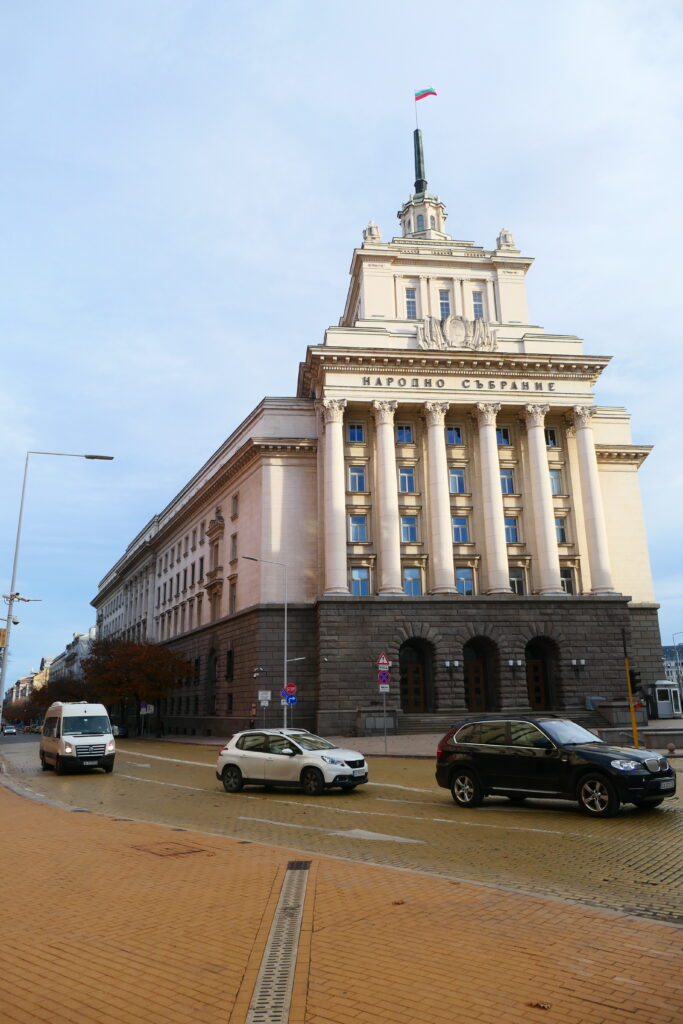
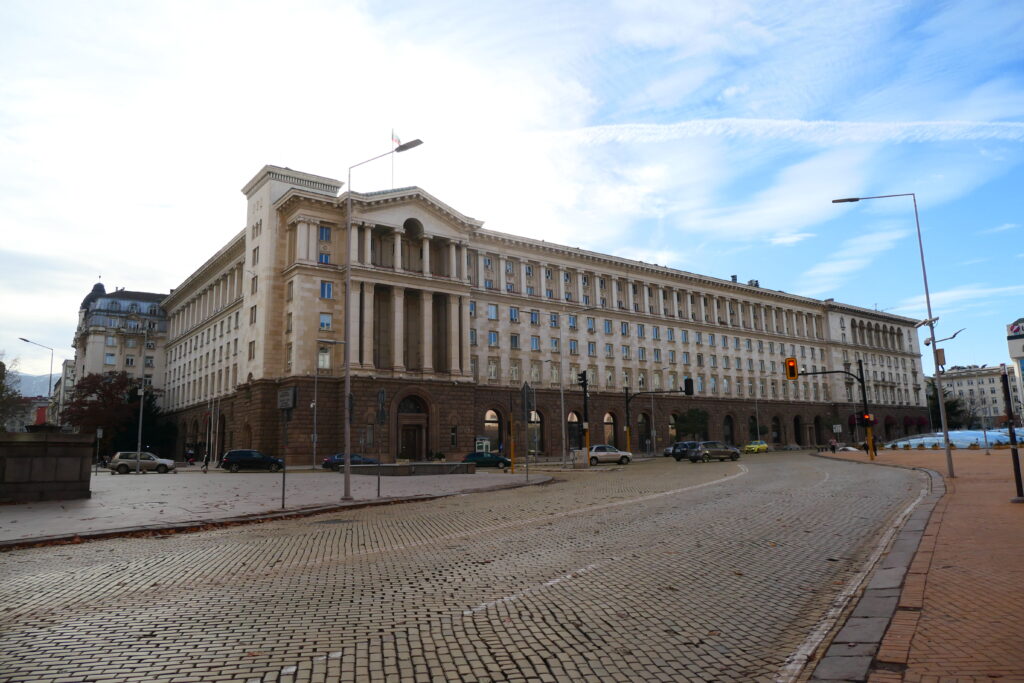
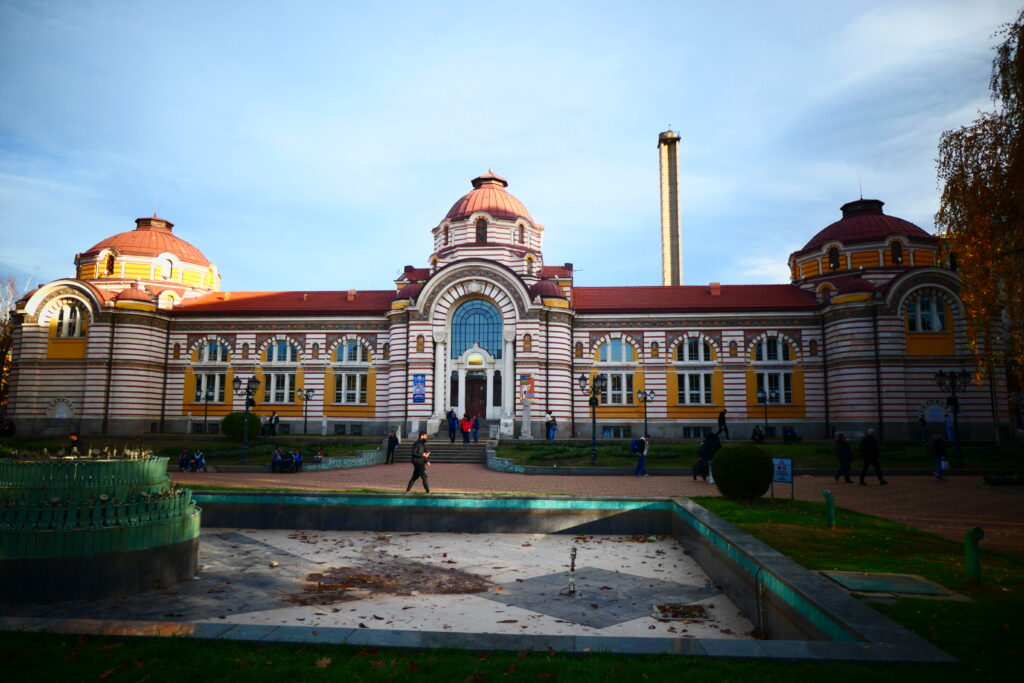
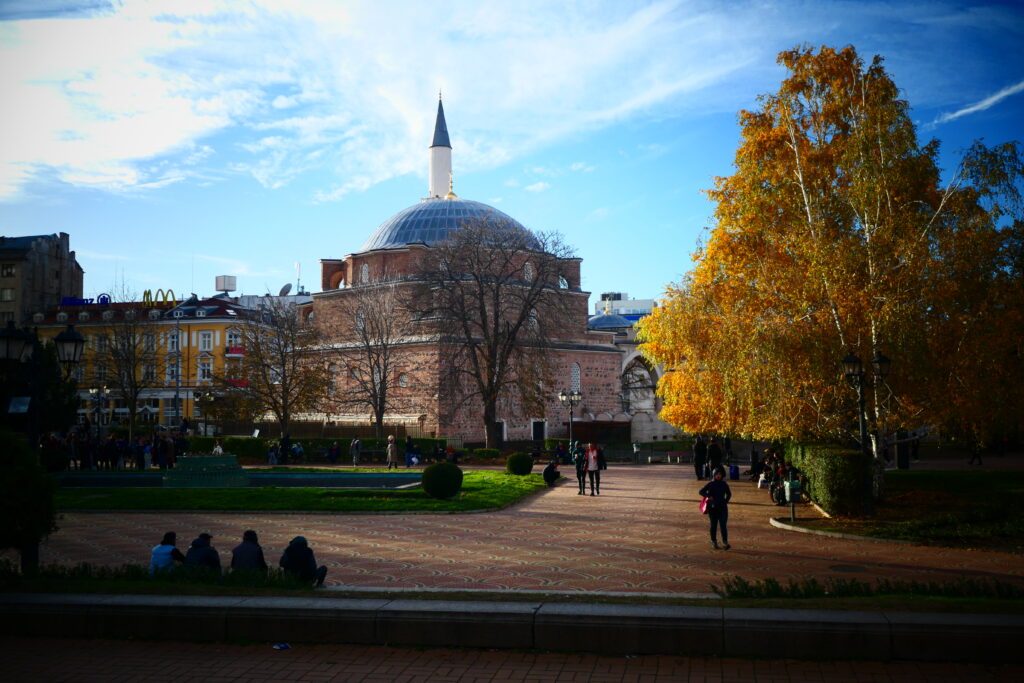
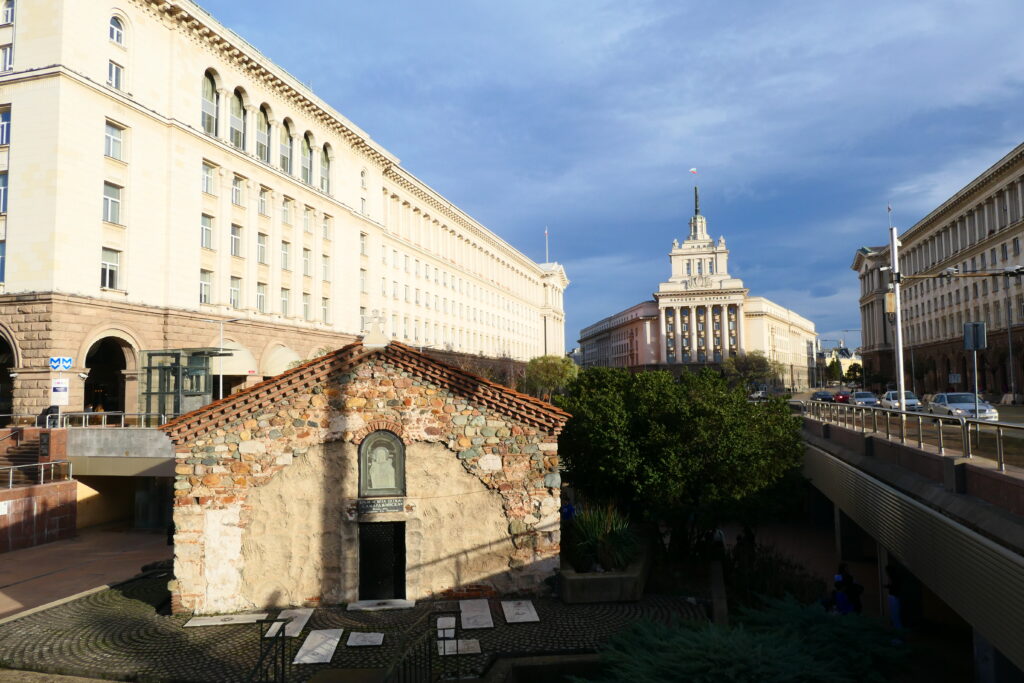
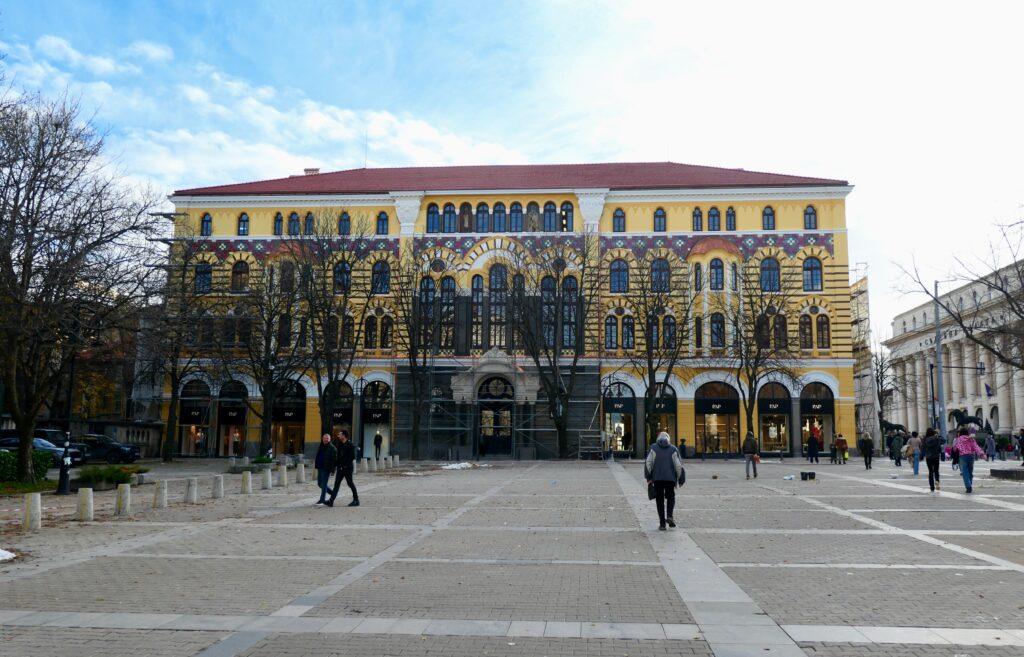


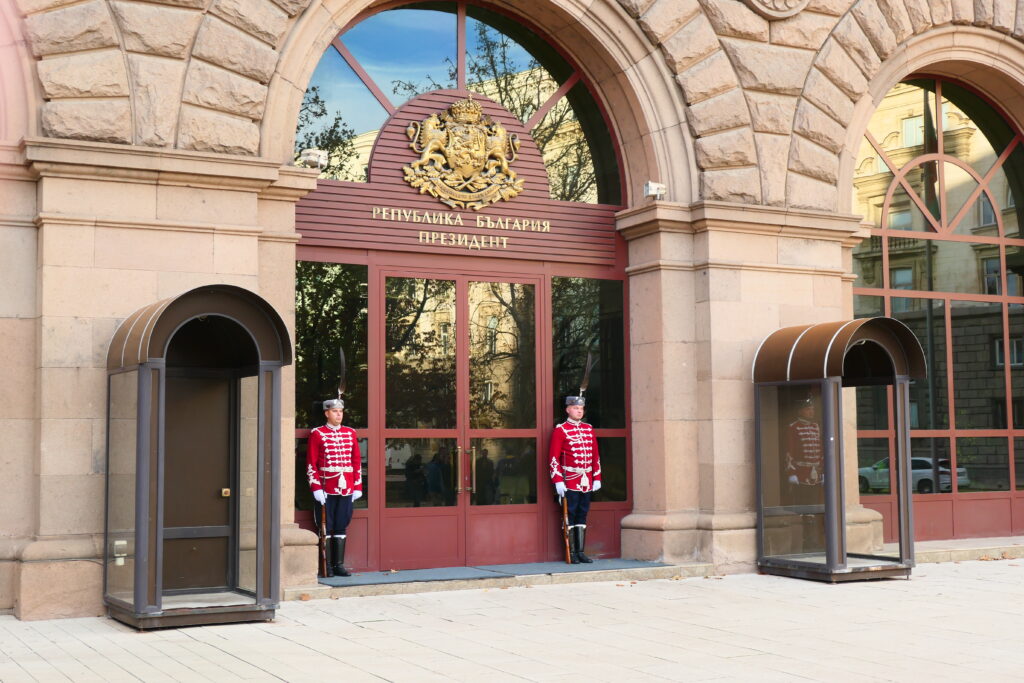

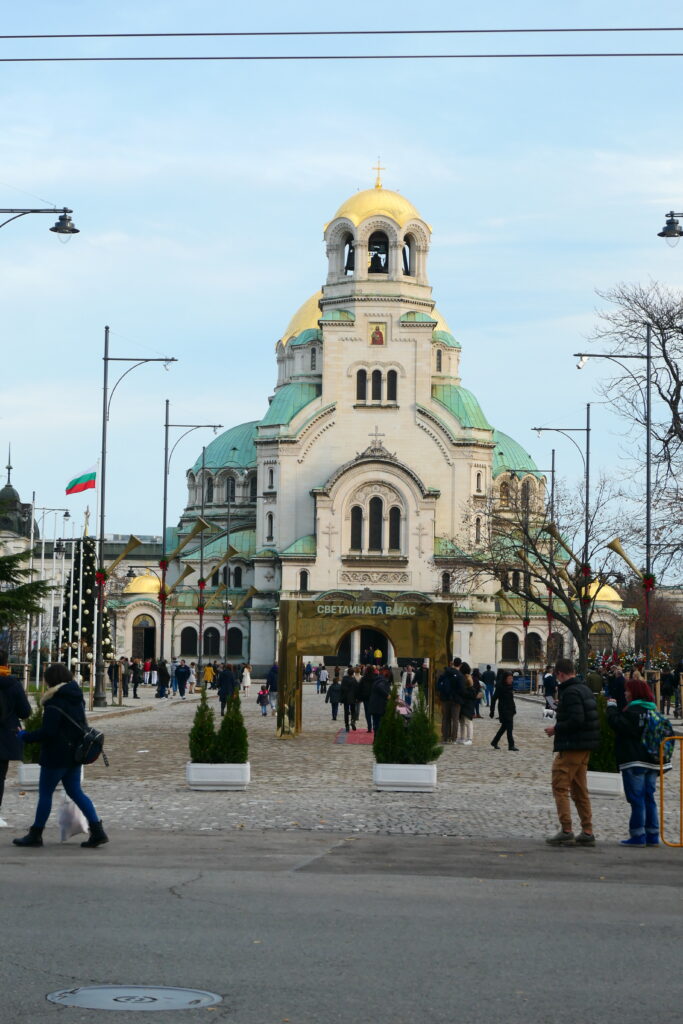
St. Alexander Nevsky, Sofia
Stob pyramids
The Stop pyramids are located close to the Rila mountains near the village of Stob, in the south west of Bulgaria. They are rock formations called hoodoos, caused by rain which washes away the softer sandstone rock beneath harder stones that act as protective caps. Mostly they are 20-30ft (6-10m) in height. The site is a popular destination for hikers and nature lovers, providing scenic views and a fascinating glimpse into the region’s geological history.
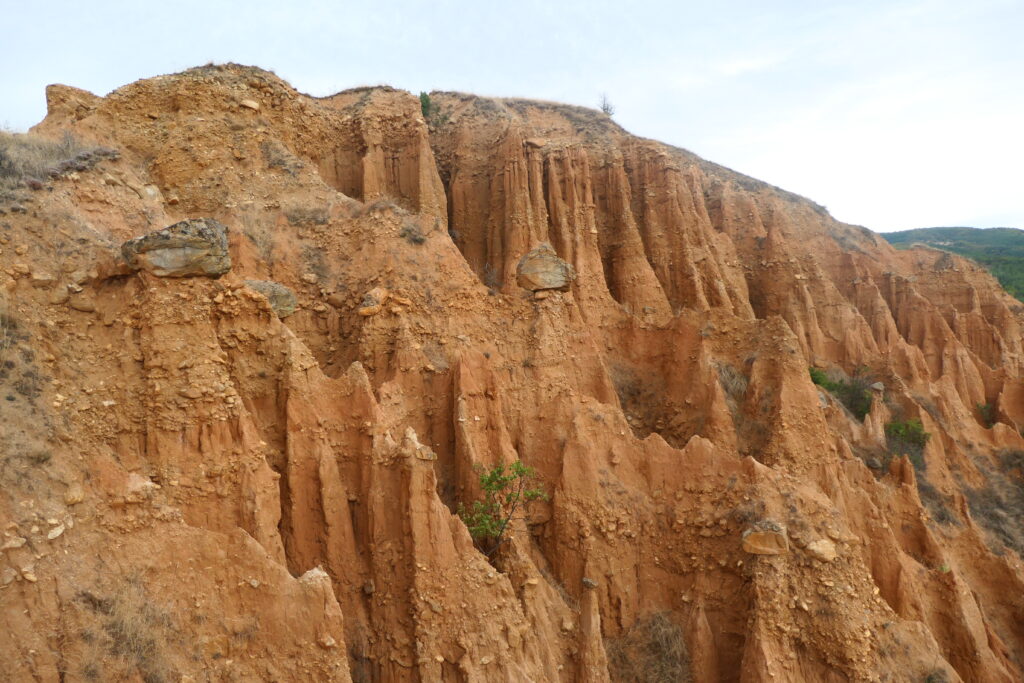



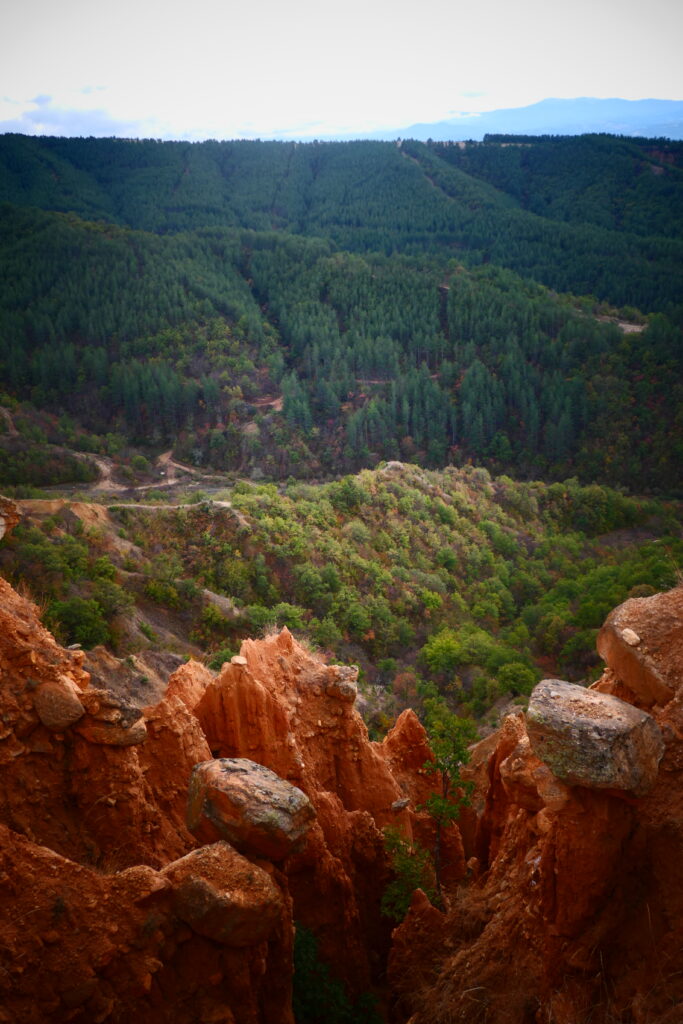
Veliko Tarnovo
Veliko Tarnovo is a pretty, historic city in north central Bulgaria, situated along the Yantra River. Known as the ‘City of Tsars’, it was once the capital of the Second Bulgarian Empire and remains a cultural and historical center. The city is famous for its stunning Tsarevets Fortress, a medieval stronghold that offers panoramic views of Veliko Tarnovo and the surrounding hills. The charming old town features cobbled streets, traditional houses, and vibrant marketplaces. Veliko Tarnovo also boasts several churches, museums, and art galleries, making it a popular destination for history enthusiasts and tourists seeking Bulgarian heritage. The architecture and the steep sided cliffs are a sight to behold.

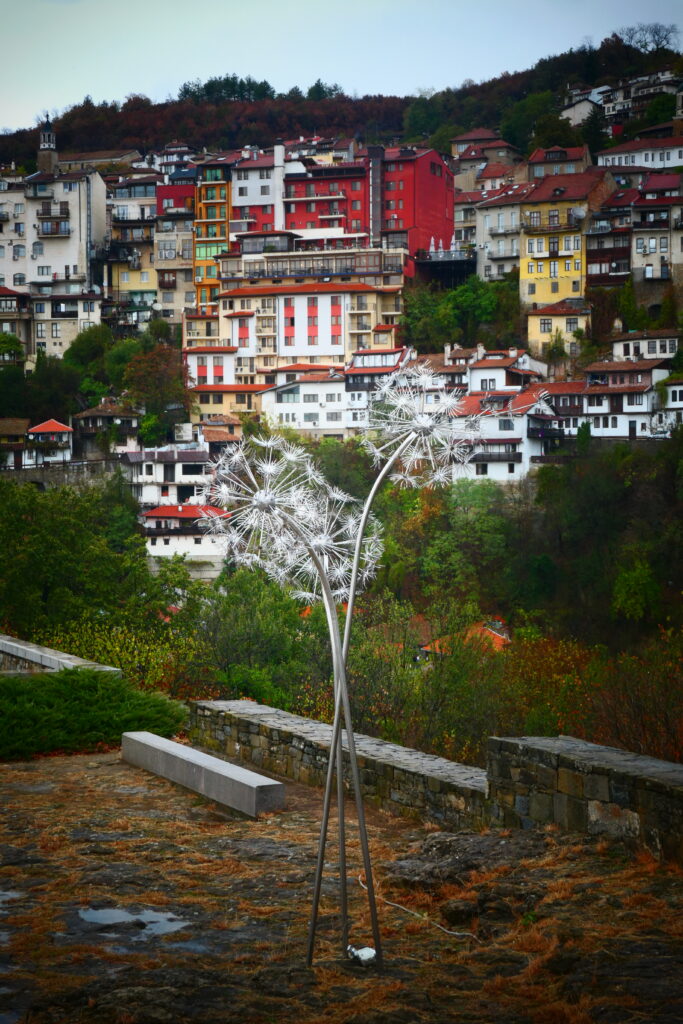
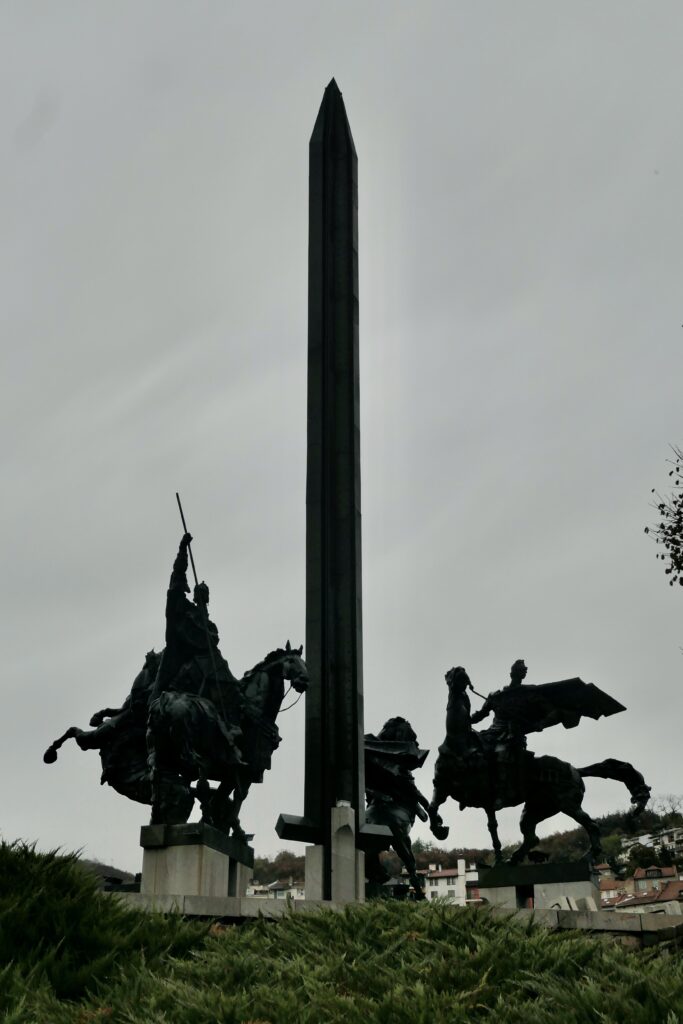



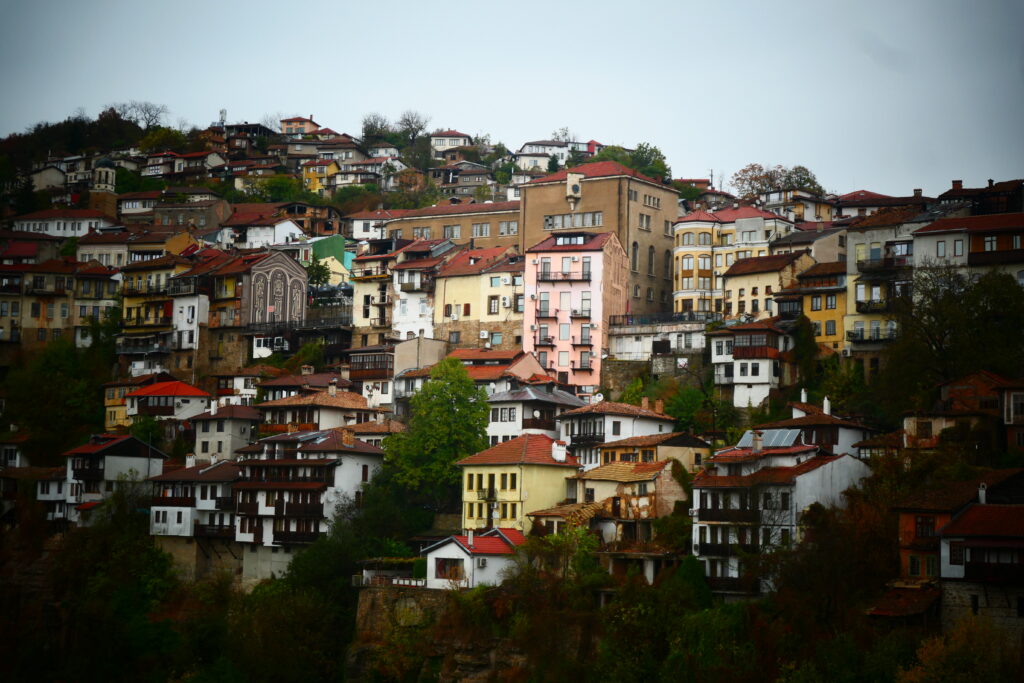
What’s it like to drive in Bulgaria?
They drive on the right hand side of the road in Bulgaria. Driving in Bulgaria is very ordered in the main and most drivers follow the rules. We didn’t encounter any aggressive driving at all. Be aware that there are many traffic police hiding on roads, as well as numerous toll road ‘police’.
Road tolls in Bulgaria
Most roads in Bulgaria have now become toll roads, and thus it’s advisable to pay online prior to travelling into Bulgaria. The fine per day is BGN70 (Nov 2023), which far exceeds the cost for paying the toll online. If you receive three fines in a calendar year (Jan – Dec), there is no point is paying for a vignette, as you cannot be fined more than three times in a calendar year. If you do receive three fines in a calendar year, you may still be asked by BG Toll guards to pay a further fine at the border if you haven’t bought a vignette; however you should not pay this fine at the border – all you need to do is argue your case – as customs officials will not ask you to pay a further fine.
Despite the roads being paid for though tolls, many are in a poor state, although to be fair, many are also very good. More rural roads do still tend to have large potholes and large cracks, as well as melted tarmac.
Driving in the mountains of Bulgaria
Driving across the mountains in the Central Balkan national park also requires additional care, due to the sudden changes in temperature and precipitation, which can cause very dense fog.
Do you require an international driving permit in Bulgaria?
We’ve created a dedicated page to driving abroad, which answers this question, and more, which you might find helpful.
Can you use your UK driving license when driving through Bulgaria?
We’ve created a dedicated page to driving abroad, which answers this question, and more, which you might find helpful.
Do I need a carnet de passages to drive in Bulgaria?
We’ve created a dedicated page to driving abroad, which answers this question, and more, which you might find helpful.
What are the speed limits in Bulgaria?
The speed limits for cars in Bulgaria are:
- 30 mph (50 km/h) for urban driving
- 45 mph (70 km/h) outside of built up areas
- 55mph (90 km/h) on dual carriageways
- 60 mph (100 km/h) on motorways
What currency do they use in Bulgaria?
In Bulgaria they use the Bulgarian lev. The use of credit / debit cards is now widespread in most cities and towns, although use of cash is prevalent in urban areas. Travellers cheques are accepted in banks in major cities. There are lots of ATMs.
You should make yourself aware of the amount that your bank charges you for using credit and debit cards abroad. Often credit cards are cheaper for purchasing items directly, and for withdrawing cash from ATMs.
What language do they speak in Bulgaria?
They speak Bulgarian in the Bulgaria. Quite a sizeable number of people also speak Turkish, Romani and Russian. We found that many also speak English, particularly in tourist areas.
What time zone is Bulgaria in?
Remember, when you’re planning your next trip to take a look at what time zone it’s in.
Do I need a visa to visit Bulgaria?
We’ve created a dedicated, more comprehensive page on visas, which you should find helpful. Check it out!
Is wild camping legal in Bulgaria?
No, wild camping is illegal in Bulgaria, although it’s well tolerated – leave no trace!
What plug / socket type do they use in Bulgaria?

In Bulgaria they use plug / socket type F.
Health issues in Bulgaria
Is it safe to drink water in Bulgaria?
Yes, it is safe to drink tap water in Bulgaria, although in our experience much of it has an unusual taste. Bottled water is readily available across the country. There are also many natural springs throughout the mountains that can also provide water – most of these springs have road signs indicating their locality.
What vaccinations are required for Bulgaria?
This NHS website is kept up to date with all relevant information on vaccinations in Bulgaria.
Phones in Bulgaria
What is the country calling code for Bulgaria?
The country calling code for Bulgaria is +359
What are the emergency phone numbers in Bulgaria?
- The emergency number for police in Bulgaria is: 112 / 166
- In Bulgaria, the emergency number for ambulance is: 112 / 150
- The emergency number for fire in Bulgaria is: 112 / 160
If you’ve got some useful info that you’d like to share, let us know!
Don’t forget to check out all the other pictures!
